UX Strategy Lab: AI + UX Strategy
How to Design AI
That People Actually Trust
Your customers expect intelligent digital experiences, but most AI features feel clunky or intrusive. I help businesses create AI interfaces that users understand, trust, and actually want to use.
What Makes AI User Experience Different?
Quick Answer
AI UX requires designing for uncertainty, building trust through transparency, and creating natural conversational flows. Unlike traditional interfaces where users control everything, AI systems need to explain their reasoning, give users appropriate control, and gracefully handle mistakes. The goal is making intelligent technology feel helpful rather than unpredictable or intrusive.
Most AI projects fail not because of the technology, but because of poor user experience. Users abandon AI features they don't understand or trust, no matter how sophisticated the algorithms.
I help businesses bridge that gap between powerful AI capabilities and intuitive user experiences.
Why Most AI Features Feel Frustrating Instead of Helpful
I've seen this pattern over and over: companies build amazing AI technology, but users either ignore it or get frustrated trying to use it. Here's what typically goes wrong:
Black Box Syndrome
AI systems that don't explain their reasoning feel unpredictable and untrustworthy. Users need to understand why the AI made a recommendation or decision.
Robotic Interactions
AI interfaces that feel mechanical rather than conversational create friction. People want to interact naturally, not learn new command syntax.
Overwhelming Capabilities
Showing users everything the AI can do upfront creates cognitive overload. People don't know where to start or what to expect.
How I Design AI That Builds Trust
I've learned that successful AI experiences aren't about showcasing how smart the technology is. They're about making users feel confident, informed, and in control while getting genuinely helpful assistance.
Here's how I approach designing AI that people actually want to use:

Start With Partnership, Not Automation
Position AI as an intelligent assistant that amplifies human judgment, not as a replacement for human decision-making.

Always Explain the "Why"
Transparent AI builds trust. Users should understand how the system reached its recommendations and feel confident in the reasoning.

Progressive Sophistication
Start with simple, obvious AI assistance and gradually introduce more sophisticated capabilities as users build comfort and understanding.

Design for Conversation
Create interactions that feel like talking to a knowledgeable colleague, not operating a complicated machine with specific commands.

Safe to Explore
Users should feel confident experimenting with AI features without worrying about breaking things or getting stuck in complex flows.

Contextually Appropriate
AI assistance should feel natural within existing workflows, not like a separate tool users have to switch to and learn.
How I Help You Build Trustworthy AI Experiences
From strategy to execution, I help you create AI features that users understand, trust, and actively choose to use.

AI UX Strategy
Identify where AI can genuinely help your users (vs. where it might create unnecessary complexity) and create a roadmap for intelligent feature development.
Deliverables: AI opportunity assessment, user journey mapping, strategic roadmap

Conversational Interface Design
Design chat interfaces, voice interactions, and smart assistants that feel natural and helpful rather than robotic or frustrating.
Deliverables: Conversation flows, interface designs, interaction patterns
Trust & Transparency Frameworks
Create design patterns that help users understand AI decision-making and feel confident about intelligent system recommendations.
Deliverables: Transparency guidelines, explanation interfaces, trust-building patterns

Intelligent Dashboard Design
Test AI interactions with real users to identify trust barriers, usability issues, and opportunities for improvement.
Deliverables: User research findings, usability reports, optimization recommendations


AI UX Implementation
Work with your development team to ensure AI features are implemented in ways that maintain the intended user experience.
Deliverables: Implementation specifications, design handoff, quality assurance
AI Feature Testing
Work with your development team to ensure AI features are implemented in ways that maintain the intended user experience.
Deliverables: Implementation specifications, design handoff, quality assurance
Common Questions About AI UX Design
How do you design AI that people trust?
Design AI interfaces that explain their reasoning, give users control, and start simple before becoming more sophisticated. Transparency builds trust - users should understand what's happening and why.
Why do most AI projects fail from a user experience perspective?
Most AI projects fail because they focus on the technology first instead of the user experience. Users don't trust black box systems, get frustrated with unpredictable responses, and abandon AI features that feel complicated.
Can AI interfaces work for non-technical users?
Absolutely. The best AI interfaces hide technical complexity behind natural, conversational interactions. Users should benefit from AI intelligence without needing to understand machine learning concepts.
What makes AI UX different from regular UX design?
AI UX requires designing for uncertainty, building trust through transparency, creating natural conversational flows, and helping users understand intelligent system capabilities without overwhelming them.
How do you balance AI automation with user control?
Design progressive automation where users can choose their level of AI assistance. Start with suggestions users can accept or reject, then gradually offer more automated capabilities as trust builds.
How do you test AI user experiences?
Test both task completion and emotional response. Users need to accomplish their goals AND feel confident about the AI's assistance. Look for trust signals, error recovery patterns, and long-term adoption.
When You're Ready for AI That Actually Helps Users
These are the signs that you're ready to create AI experiences users will trust and adopt.
1
You Have AI Technology That Users Aren't Adopting
Your AI capabilities are impressive, but user adoption is low. People try the features once and then ignore them or work around them.
2
Users Don't Trust Your AI Recommendations
Feedback shows users are skeptical of AI suggestions, frequently override automation, or avoid AI features because they don't understand the reasoning.
3
You Want to Differentiate Through Intelligence
Your AI capabilities are impressive, but user adoption is low. People try the features once and then ignore them or work around them.
4
Complex Tasks Need Smart Simplification
Your users struggle with complicated workflows that could be streamlined through intelligent assistance and smart automation..
5
You're Building New AI Features
You're developing new AI capabilities and want to ensure they feel natural and trustworthy from the start, not bolted-on afterthoughts.
6
Your Team Needs AI UX Guidance
Your developers understand AI technology, but you need design expertise to make intelligent features feel intuitive and trustworthy.
What Happens When You Get AI User Experience Right
These results come from businesses that invested in creating trustworthy, user-friendly AI experiences
4x
Higher AI Feature Adoption
65%
Reduction in Support Requests
85%
User Trust Score
300%
Improvement in Task Success
Enterprise-Tested AI UX Methodology
Designing trustworthy AI experiences requires understanding both human psychology and business constraints. My portfolio shows how strategic UX thinking solves complex technology adoption challenges.


